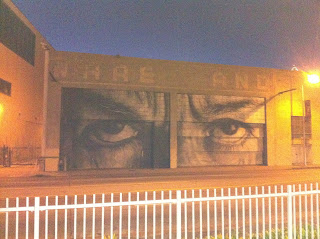Monday, February 18, 2013 -  art forgery,Church,German forgers,murals
art forgery,Church,German forgers,murals
 No comments
No comments
 art forgery,Church,German forgers,murals
art forgery,Church,German forgers,murals
 No comments
No comments
Jonathan Keats' FORGED: What Is Belief? Lothar Malskat (1913-1988)
by Catherine Schofield Sezgin, ARCA Blog Editor-in-chief
‘We need to examine the anxieties that forgeries elicit in us now. We need to compare the shock of getting duped to the cultivated angst evoked by legitimate art, and we need to recognize what the art establishment will never acknowledge: No authentic modern masterpiece is as provocative as a great forgery. Forgers are the foremost artists of our age.’
I will leave it to our readers with a background in art history and visual arts to agree or disagree with Keats' premise (which he elaborates on in an introductory essay). What I particularly enjoyed were the chapters devoted to six 20th century forgers. Keats nicely sums up the works of these forgers, their explanations for breaking the law (or not), and discusses the impact these forgeries have had on the art market. Here on the blog this week I'll showcase each of these forgers and add a bit of online research that I couldn't refrain myself from doing as I read FORGED.
Keats highlights Lothar Malskat, a German restorer, who faked a mural in a damaged 14th century church after World War II; Alceo Dossena, an
Italian sculptor, who created antiqued marbles in the 1920s; Han van Meegeren, a
successful Dutch portrait artist, who forged six paintings by Vermeer and sold a couple of paintings to the Nazis; Eric Hebborn, forger of old master drawings from the 1960s until his murder in 1996; Elmyr de Hory who forged out of his studio in Ibiza until his suicide in 1976; and Tom Keating, former housepainter and restorer, who called his forgery work in the 1950s and 60s an act of socialism.
What is Belief? Lothar Malskat (1913-1988)
In May 1952, Lothar
Malskat walked into a police station in Lübeck to report that he had forged the supposedly restored
murals in Marienkirche (the Lutheran St. Mary’s church). Eight months earlier, the 13th
and 14th century frescoes had been celebrated at the church’s 700th
anniversary. In 1942, the fires
from the Allied bombing of Lübeck on Palm Sunday had ‘peeled five centuries of
whitewash off the walls, exposing enormous Gothic frescoes painted when the
building was erected. Dubbed “the
miracle of Marienkirche,” the discovery was sheltered under improvised roofing
until the war ended and structural repairs could begin.” In 1948, Lothar and his boss, Dietrich
Fey, had been commissioned to restore the murals.
Lothar claimed that ‘He’d faked the medieval paintings on Fey’s orders, he said,
and he was confessing because “that crook Fey” had treated him unfairly.’ Neither the police nor the media believed him. He hired an attorney and confessed to making phony
Picassos and Rembrandts. The police searched his house and found evidence that led to an investigation commission and a trial. Lothar and Fey were sentenced to eighteen months and twenty months, respectively, in jail.
At Marienkirche, the forged murals in
the choir were plastered over but the forgeries in the nave – which Malskat had
quickly repainted on the reprimed brick surface – are referred to in guidebooks
as Goth frescoes with no mention of Malskat or the forgery conviction.
As for Malskat, before he could serve his jail sentence he fled to Sweden for a few years. Keats writes:
He decorated Stockholm's Tre Kroner Restaurant in the 14th-century Gothic style and recycled his Schleswig turkeys in ersatz murals for the Royal Tennis Court. Extradited to Germany in late 1956, he served his jail term and then faded into obscurity, eking out a living as a self-styled expressionist for his remaining thirty-two years.
Keats adds in a footnote:
Obscurity, not anonymity. A couple of years before Malskat died, the German author Günter Grass (a Lübeck resident) revisited the Marienkirche scandal in a novel called The Rat.Book reviewer Malcolm Boyd for the Los Angeles Times in 1987 describes Grass' character Malskat as 'an honest man who forged cathedral artworks.'
FORGED was published two months ago by Oxford University Press. I purchased my copy from City Lights Books of San Francisco where Keats spoke in January. You can also read Keats on this subject in Art & Antiques here.



